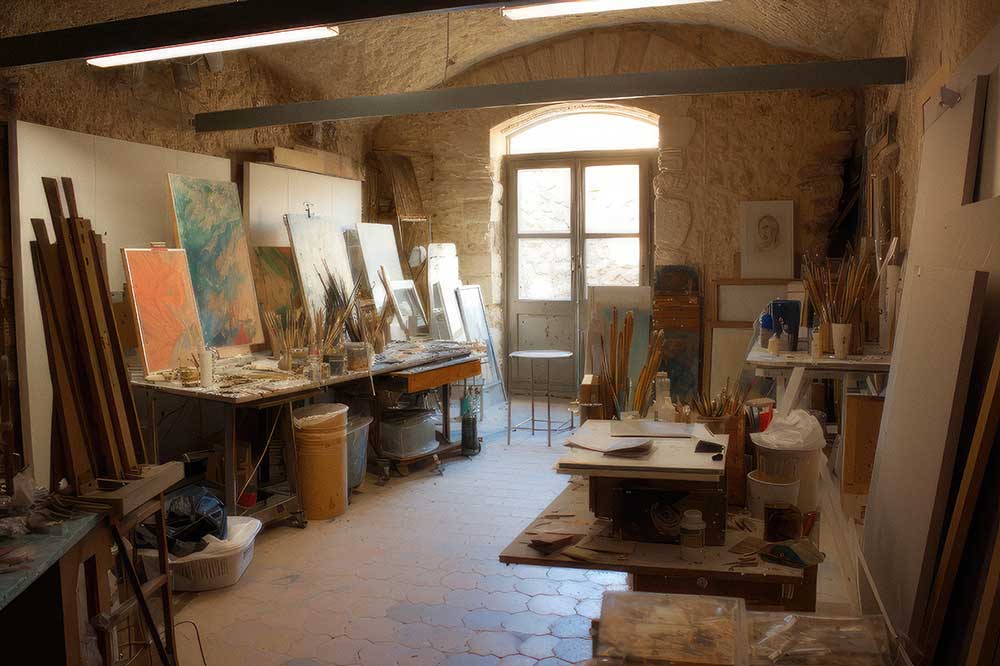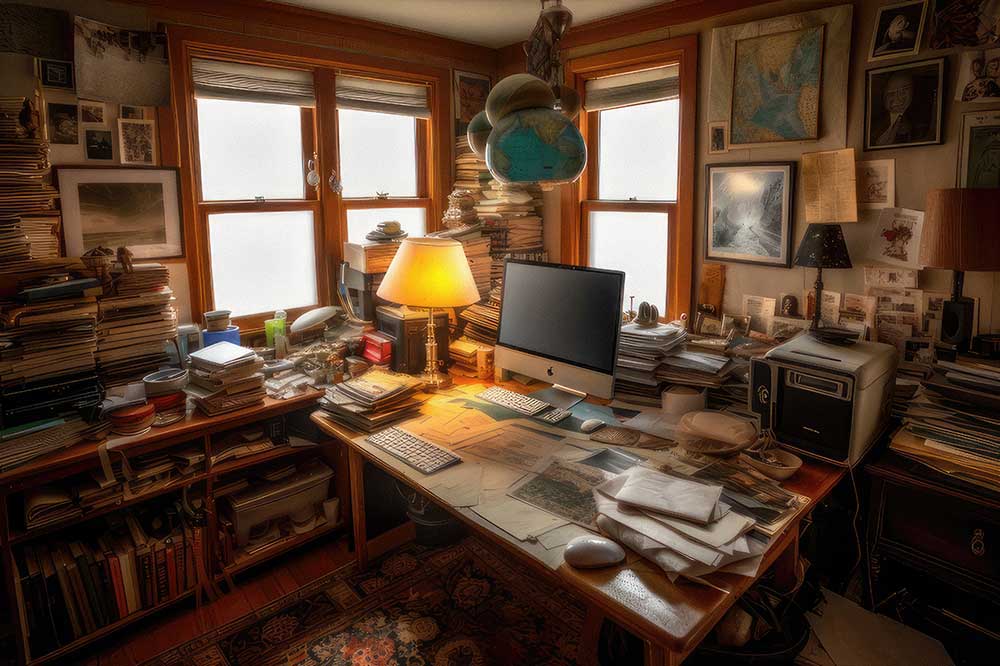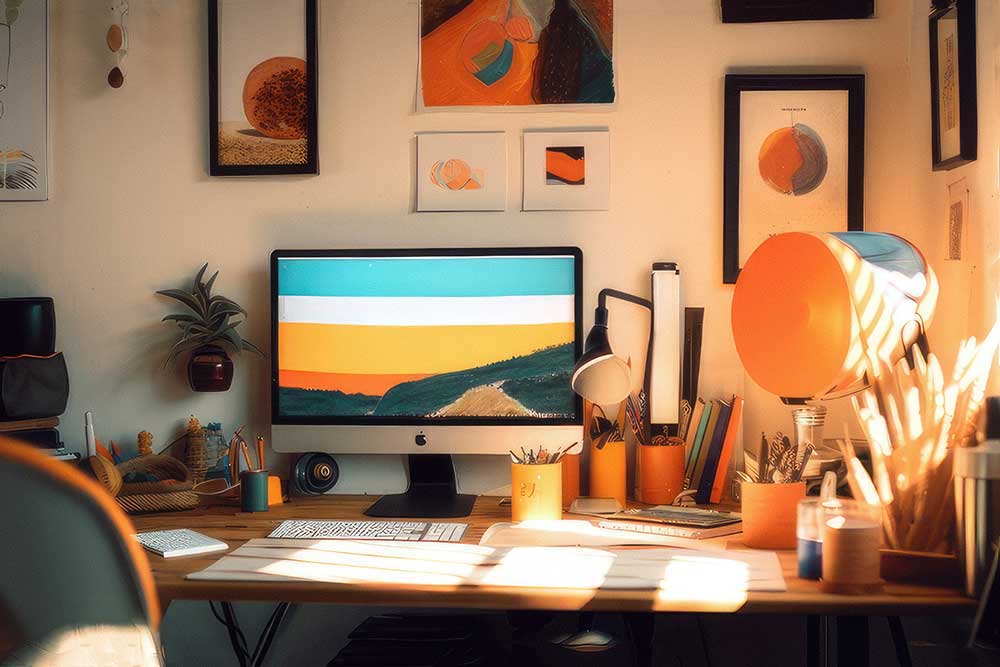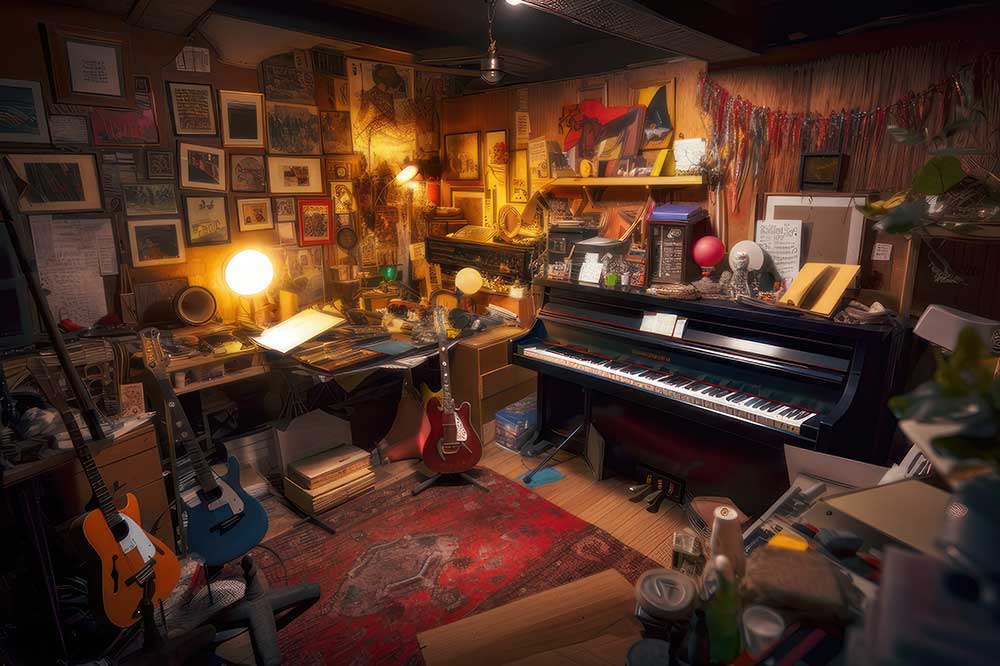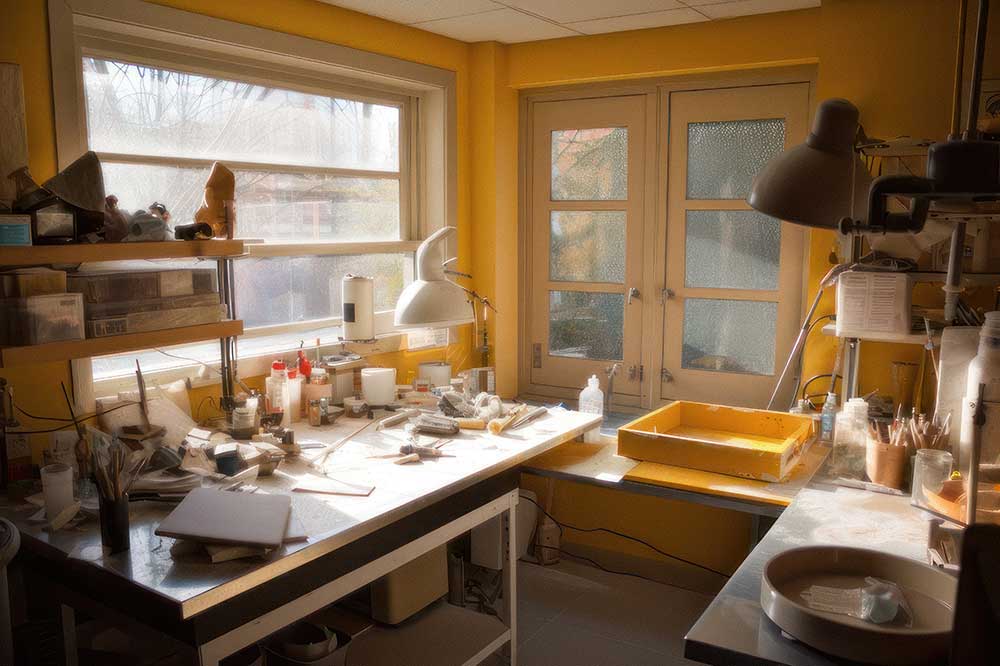They are usually called artist studios: they are the laboratories and ateliers where artists carry out their creative activities, but also their craftsmanship and the boring but necessary work to ensure that a work sees the light.
Sometimes they are located in artists’ homes, other times in dependences, attics, basements, recently in coworking spaces. They are spaces in which the material and spiritual conditions necessary to create and finalize an artistic work coexist and are perceived.
Refuge and poetry
They are places inhabited by charm and magic because it is there that “thought”, from a chaotic form and a wild substance, is transformed into a cosmos with a meaning and above all with a more or less universal empathic message. They are spaces most often unknown by the public because they are intimate spaces, they are refuges, islands, sanctuaries, monastic cells or even prison cells, which artists normally defend and modestly hide because often, the primordial chaos of inspiration and experimentation is very away from the image that the artist has socially, infinitely far from the cosmos of purposeful creation.
It is possible that, entering one of these spaces of creativity and work, it is the sense of smell that is captured by a deep scent of cocoa, dried figs, spices, cigars, orange blossoms, freshly baked food, dried colors, stationary store; other times it is the chaos that reigns that strikes us: catalogues, editorial rarities, bizarre collections, notepads and notebooks crammed on top of each other, pipes, cameras, stuffed animals; at other times it will be the extreme maniacal order with which the artist arranges and organizes his work tools. Spaces enveloped in semi-darkness, chiaroscuro or, on the contrary, full of light and bright colors; spaces impregnated with music, books, newspapers, objects from everywhere, sketches, drawings, pre-worked. Natural, modernist, minimalist, welcoming, elusive, mysterious spaces, full of fetishes; spaces in which silence seems to be more important than the space itself; spaces made on purpose so that everyday life and all forms of life are kept far away in order to then be able to represent them; spaces similar to a blank page or canvas before being stained by the creative action. Spaces similar to “anechoic” rooms, out of time and space.
Chaos and cosmos
Regardless if we are talking about a writer, a musician, a designer, a photographer, a sculptor, etc… let’s stop for a moment to think about what happens in these spaces when the artist is there in full creative-working activity. They become real experimental laboratories where things very often don’t go the right way; where frustration sometimes turns into anger and sometimes into depression. We can define them as “high risk places” of struggles with oneself and with work tools that fail to materialize what one has in mind; places where indecision sometimes becomes absolute master; other times it is boredom that takes possession of the space and often, very often the frustration of the error which sometimes miraculously transforms itself into a new source of inspiration and work, until it finally materializes in the fullness and feeling of harmony that taste if you are satisfied with what you have created. This pattern is described by someone familiar with it as a constant process of chasing failure, eventually merging into the finished work.
Ultimately, we could also see these artist studios as archives of thought and as an encyclopaedia of emotions, as spaces of freedom, as a destiny of the astral journey that an artist makes when he creates and works. A friend of mine tells me that when he closes his studio in the evening and returns to everyone’s daily life, he feels and believes that he (his studio) continues to breathe and pulsate with its own life.
Everyday life and Normality
However, we must not associate these spaces solely with places where concepts, styles, thoughts, new forms magically conjure each other; they are also spaces where totally everyday things happen, not at all glamorous and sometimes mundane. In my case, my studio is the attic of our terraced house. How many times has the magnificent worn out wooden table that I have in my study been used to help my daughter understand mathematical formulas, philosophical concepts, physical equations or structures of the French language; how many times does my son use the computer where I create with artificial intelligence to play his favorite video game or watch his classmates’ videos a thousand times over; how many times the comfortable sofa that I use to take stock of the situation has been transformed into a love alcove; how many models have trampled the cozy and huge carpet given to me by my mother to avoid feeling the cold of the floor in the winter months…
Even though I’ve never done it up to now, I always aim to transform my studio into a market space so that people come to see it and see my works up close, transforming my creative and artistic work space into a sort of of gallery. All of this has always remained just an idea because then I think (and I think I’m right) that no one would ever have the interest in coming to my attic to see my artistic proposals. Who knows if I add some music, a lot of beer and a combination of Iberian jamón and Italian specialties, my friends would come and who knows they would bring some of their friends; who knows some neighbor, intrigued by the mess, would come in… and who knows with time the word of mouth …. I have to think about it better …
Final Thought
Now that I have almost finished writing this article and the enthusiasm of the heart is diminishing, leaving more room for the cerebral logic, I am realizing that I have written who knows a nostalgic article, a time-refugee article and without much sense. Let’s stop and think for a moment about how the web, social media, mobile phones, artificial intelligence and all that is digital and technological has transformed artistic work. Who knows today the artist’s studio is in the cloud, fragmented into software, passwords, socials, platforms, communities; who knows it’s a 3D virtual studio that you can visit by paying for a virtual coffee; who knows is an avatar in the metaverse…who knows….
Be that as it may, there will always be a person with artistic ambitions or abilities who approaches a computer and enters that world with the intention of creating. That person and that computer will be in a space, in a place that may not always be the same, may be in different places, but will always exist. This is the space that I wanted to tell in this article.
Photosatriani
I am a curious of life with idealistic tendencies and a fighter. I believe that shadows are the necessary contrast to enhance the light. I am a lover of nature, of silence and of the inner beauty. The history of my visual creations is quite silent publicly but very rich personally, illuminated by a series of satisfactions and recognitions, such as: gold and silver winner in MUSE Awards 2023; Commended and Highly Commended in IGPOTY 2022/19/18, honorable mention in Pollux Award 2019; selected for Descubrimientos PhotoEspaña (2014), Photosaloon in Torino Fotografia (1995) and in VIPHOTO (2014). Winner of Fotonostrum AI Visual Awards 2024. Group exhibitions in: Atlántica Colectivas FotoNoviembre 2015/13; selected for the Popular Participation section GetxoPhoto 2022/20/15. Exhibitions in ”PhotoVernissage (San Petersburgo, 2012); DeARTE 2012/13 (Medinaceli); Taverna de los Mundos (Bilbao); selected works in ArtDoc, Dodho, 1X. A set of my images belongs to the funds of Tecnalia company in Bilbao, to the collection of the "Isla de Tenerife" Photography Center and to the Medicos sin Fronteras collection in Madrid. Collaborator and interviewer for Dodho platform and in Sineresi magazine [Website]



